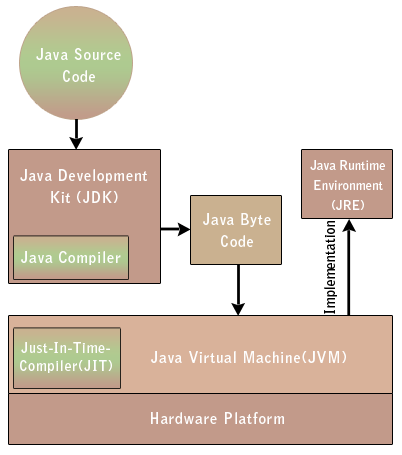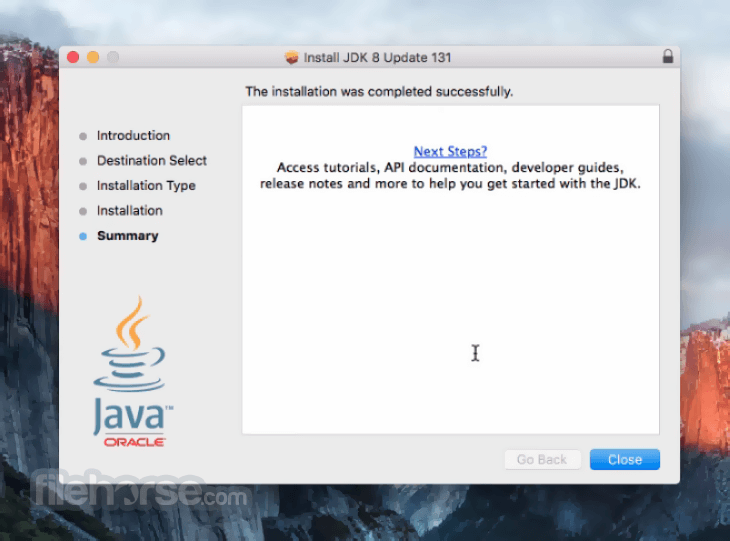What I did to get this working on my machine is to: followed instructions on Oracle JDK7 Mac OS X Port for general installation in IntelliJ open/create new project so you can add new SDK (File Project Structure) select Platform Settings SDKs, press '+' (plus) sign to add new SDK select JSDK. Download Java SE Development Kit (JDK) - The basic resources you need in order to create apps in Java, including the Java runtime environment, libraries, code samples and demo apps.
During one of AWS Lambda exploration projects, I need to use Amazon's swagger-import-tool for uploading swagger documents to AWS. The problem is that this tool has a dependency on Java 8, however, my installed JDK is 7, and I have to keep it for all existing Java projects. It seems that I need to have something like NVM (Node Version Manager) … this time for JDKs.
After some Google searches, a promising solution is to use jEnv – a command line tool to set JAVA_HOME on the fly.
Homebrew Cask
On Mac, Homebrew is the de-facto package manager, and Homebrew Cask is the app manager. I'm going to use Cask to install Java 7 and 8.
Install Homebrew Cask first if you haven't:
If your brew or cask is outdated, update and upgrade:
Install Java 7 and 8
People on the Stackoverflow cautioned not to install 8 until 7 is installed. So we are going to install JDK 7 first.
Unlike other version managers such as NVM, jEnv itself doesn't install JDKs. You have to do it yourself. Luckily, Homebrew Cask made this task really easy. But before doing that, let's check if we already have JDK 7 installed by Homebrew Cask:
If Java 7 is installed, you should see something like this:
Otherwise, install Java 7: Dvd studio pro 4.2.2 mac.
If you run into permission issue, add sudo at the beginning of the above command.
As of today, Java 8 is the latest stable. Run the following command to install Java 8:
These two JDKs will be installed at the following directories. Your JDKs' minor and patch versions might be different.
Enter jEnv

Now it is time to install jEnv:
Add the following lines to ~/.bash_profile. This will initialize jEnv.
jEnv doesn't install JDKs, so we have to tell jEnv where to look for them. Type these commands to register JDKs in jEnv (replace the minor and patch versions with yours):
After that, run this command to list all registered JDKs:
OpenJDK: Mac OS X Port Project

JDK 7 And JRE 7 Installation Guide - Oracle
The output will be something like this:
The version with an asterisk is the active version.
In my case, I need to keep JDK 7 as my default version, so I set the global version to 1.7:
And in my project, I set the local JDK version to 1.8:
JDK 7 Installation Instructions
The above command will create a .java-version file at project root. Its content is the version I just picked for this project:
Download Jdk 7 For Mac
References
Gmail password hacker no download. To learn more about jEnv, here I list some references:

Now it is time to install jEnv:
Add the following lines to ~/.bash_profile. This will initialize jEnv.
jEnv doesn't install JDKs, so we have to tell jEnv where to look for them. Type these commands to register JDKs in jEnv (replace the minor and patch versions with yours):
After that, run this command to list all registered JDKs:
OpenJDK: Mac OS X Port Project
JDK 7 And JRE 7 Installation Guide - Oracle
The output will be something like this:
The version with an asterisk is the active version.
In my case, I need to keep JDK 7 as my default version, so I set the global version to 1.7:
And in my project, I set the local JDK version to 1.8:
JDK 7 Installation Instructions
The above command will create a .java-version file at project root. Its content is the version I just picked for this project:
Download Jdk 7 For Mac
References
Gmail password hacker no download. To learn more about jEnv, here I list some references:
Determining The Default Version Of TheJDK
- jEnv official site
- The Stackoverflow thread
- Andrew John's blog post
